The Most Comprehensive Guidebook On Programmatic Advertising.
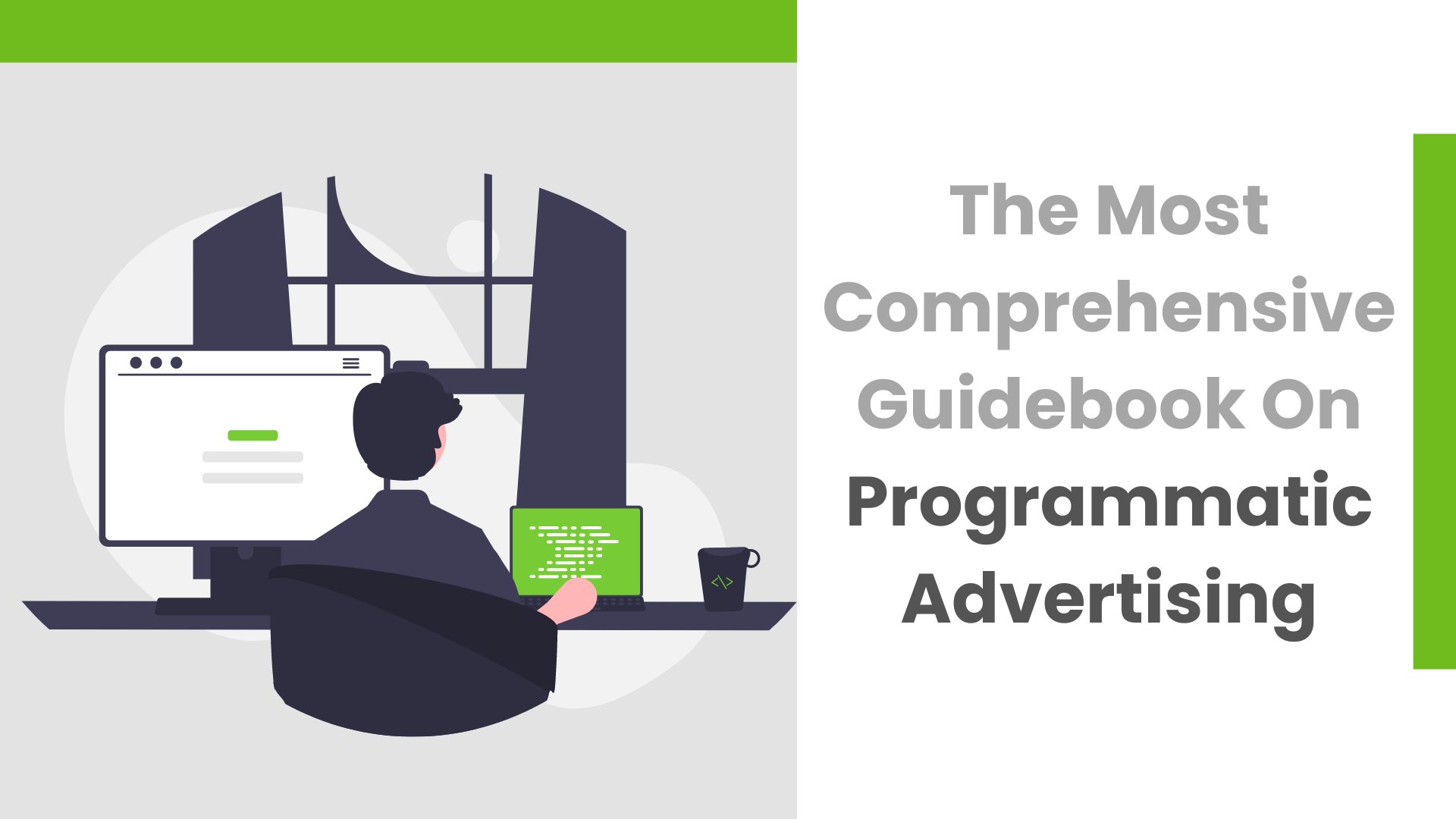
In 2020, Programmatic Trading is expected to have a market share of 69.2% in the overall digital advertising spend. It shows that Programmatic Advertising is no more just a buzzword. Programmatic Advertising uses a powerful Artificial Intelligence (AI) and Machine Learning (ML) algorithm to make smarter, faster decisions to buy the ad space, which is similar to how the human brain processes and makes decisions. In simpler words, programmatic advertising helps to reach the right user at the right time with the right Ad. Over here, we will see how digital advertising worked before the time of Programmatic Advertising, then the Rise of Programmatic and its future.

What You Will Learn!
The Era of Digital Advertising
You can split the time before and after commercial internet services. The commercial internet service not only helped the users to get the required information but it also initiated Online Advertising for businesses to leverage from the internet.
The Internet is not a free medium; it is an ad-funded medium where Publishers looked for how to monetize their website. Somehow, they thought posting ads on their site will generate a good revenue similar to the daily newspaper, which holds a lot of commercials in it, and even Advertisers thought of tapping Internet medium to uplift the engagements. On October 27, 1994, Wired magazine’s site displayed the first-ever banner ad on the web, for that AT&T Advertiser spent $ 30,000 for three months of hosting their Ad on Wired’s website, their investment was rewarded with a 44% click-through rate. That’s incredibly high engagement, especially compared to .05% click-through rate contemporary brands might expect from their banner ads.

It helped a lot of advertisers to consider the digital space for displaying the ads. They started to deal directly with the publisher to book the ad slot and send the creatives to them. The direct sale model was becoming complex over time to both Advertiser and Publisher due to the lack of tracking systems over that period and a lot of combustions happening.
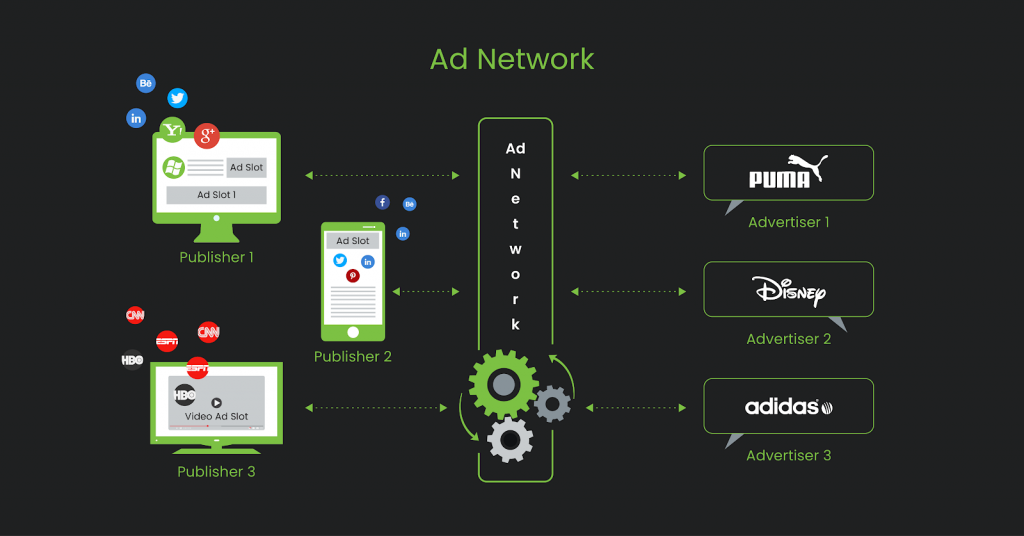
To overcome it, Ad Tech platforms like Google built an Ad Network in 1997, which helped both Publisher and Advertiser. Ad Network was able to manage the campaigns, budget, ad tags for the advertiser and manage the Ad units & measure the revenue for the publisher. Though the Ad Network worked well, it had a catch like lack of editorial control, audience duplication, and often didn’t get the full details of the ad spots. When you don’t know the ad spot’s complete information, you’re taking more of a risk on whether your ad will be effective or not. These things affect their decision against putting their dollars into ad networks. The later evolution of other advertising technology, such as ad exchanges, which override the issues with Ad Network, marked the beginning of what is known today as the Programmatic Advertising era.
Rise of Programmatic Advertising
Ever since programmatic advertising got introduced, it has gone from strength to strength. Today it spread across all the internet mediums like
- Mobile
- Desktop
- Tablet
- CTV/OTT and
- DOOH
It also helped in the rise of the Advertiser media spend; if you see year-over-year growth of the programmatic advertising, it has steady growth.
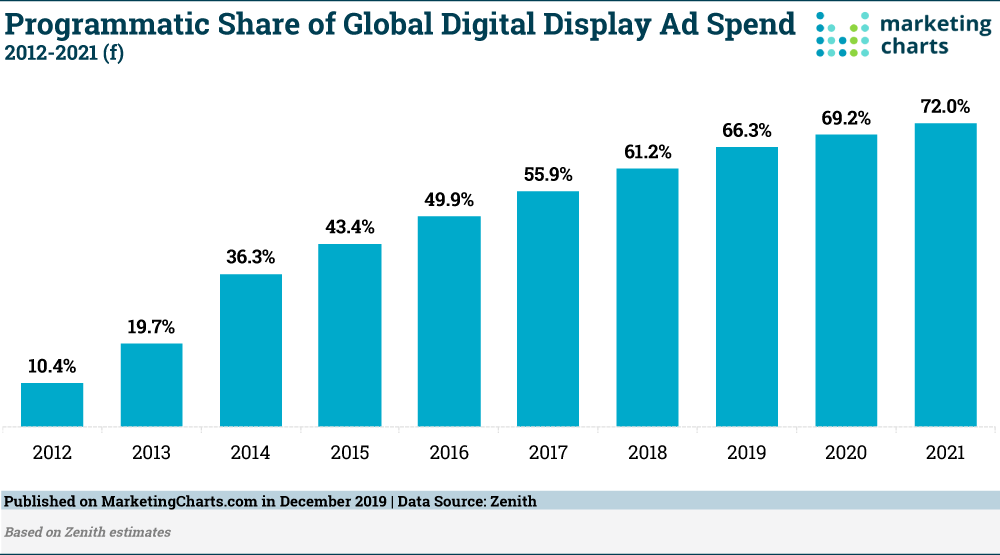
Fundamental working principle of Programmatic ads
In Programmatic Advertising, there is a media buying and selling protocol between the marketer and the publisher, mostly preferred programmatic media buying is Open Auction, also called Real-time Bidding (RTB). In support of the open auction, there is a list of components in-between to help the advertiser reach the niche audience. Here, we see the most common format of programmatic advertising, from beginning to end, to help you understand the process.
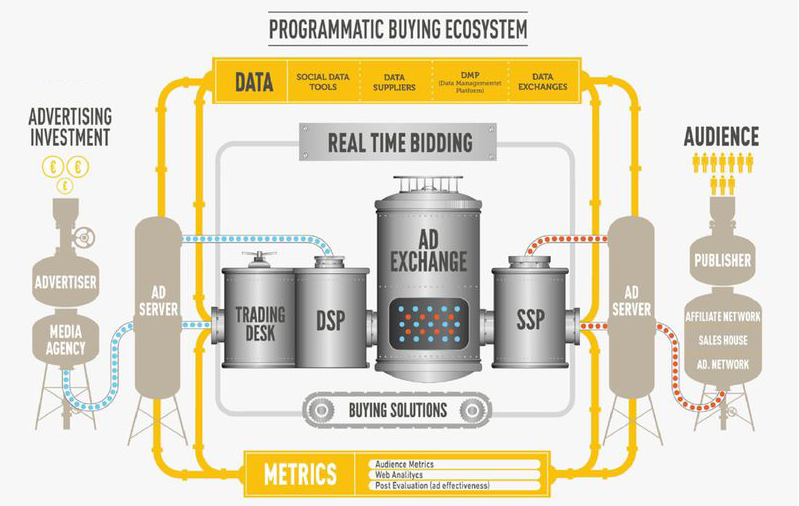
Step 1: When a user visits a website that uses programmatic advertising, it starts the automated bidding to serve an ad to this particular viewer.
Step 2: The publisher lists the ad space for this user on their supply-side platform (SSP). The SSP acts as the seller for the publisher. It lets advertisers know the characteristics of the site, user interest, geography, demography, and ad space that allows DSPs to make their bid.
Step 3: Next, the corresponding demand-side platform (DSP) reviews the information on the user provided by the SSP. DSPs act for advertisers to choose ad space that aligns with the advertisers’ budget and targeting parameters. It assigns the ad placement a value based on the website and user’s characteristics.
Step 4: On behalf of the advertiser, the DSP makes a bid on the ad placement. All this happens in real-time, which is why programmatic advertising can often be referred to as real-time bidding (RTB).
Step 5: Once the SSP receives the bids from various DSPs, the SSP will then pick the winner. There are different bid strategies out there for different SSPs. Waterfall bidding, Client-side, and Header bidding with header bidding widely considered the most efficient and fair.
Step 6: Once the winning bid is picked, the SSP displays that ad to the user on the publisher’s site. This entire process happens in less than 100 milliseconds, all while the page is loading for the user.
Major Components of Programmatic ecosystem
We have seen the general steps by step process of programmatic media buying, but we take a look at the components in between a Marketer and Publisher.
Media Agencies
Most of the significant Advertisers don’t hire in-house marketers due to control in cost and time, so they rely on Marketing Media agencies for creating, planning, and executing online advertising campaigns on behalf of them. Ex: GroupM, OMD, IPG, Havas, Publicis, and NoboruWorld
Ad Servers
These technology platforms host the advertiser’s creatives (ads) and help deliver them to the publisher. Many ad servers also provide in-depth campaign analytics, such as engagement metrics and conversion reports—Ex: DoubleClick Campaign Manager (DCM), Innovid, Sizmek, etc.
Demand-Side Platforms
A demand-side platform allows media buyers to connect with various ad and data exchanges through one user interface. DSPs operate similarly to stockbrokers in that media buyers use them to purchase ad inventory from publishers through the ad exchange, just like investors use brokers to buy stock from companies via the stock exchange. Ex: FacebookAds, Brightroll, Rocketfuel, and TheTradeDesk
In simpler terms, we can say that Demand Side Platforms hold the inventory on another side. The advertiser needs to book the campaigns in DSP, so they get mapped to the niche audience.
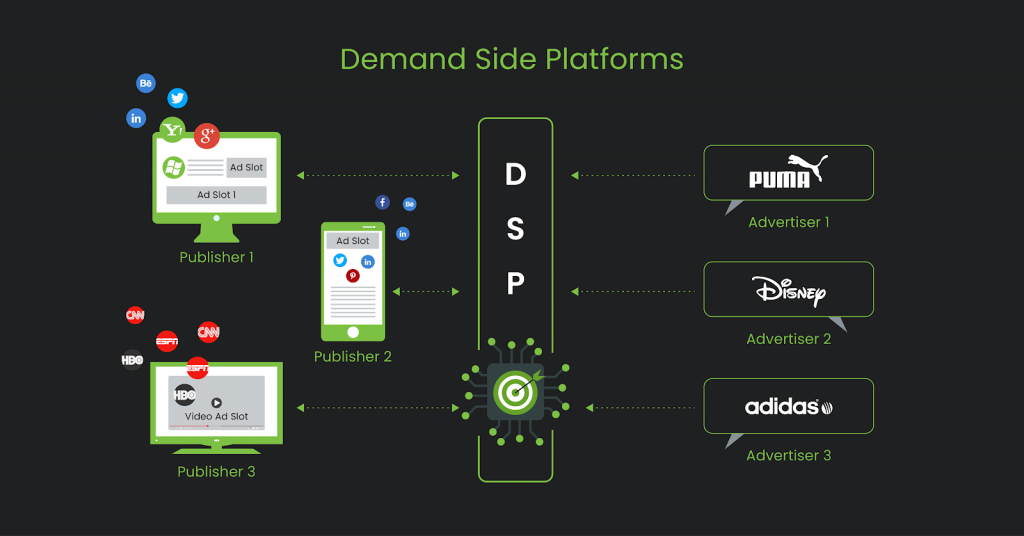
Data-Management Platforms
DMPs are responsible for collecting, storing, and organizing massive loads of data for advertisers taken from a wide range of first-party, second-party, and third-party sources. This data is stored and pushed through the DMP’s software and undergoes a process called data classification. Each piece of user data is analyzed and put into different categories (also called data taxonomies) to build distinct user profiles. Ex: Bluekai, Exelate, Lotame, Adometry, etc.
Ad Exchange
Ad exchanges are dynamic technological platforms that facilitate the buying and selling process of available impressions between the advertisers (buyers) and the publishers (sellers). Currently, there are around 52 exchanges available in the market Ex: OpenX, Google AdX, Appnexus, Facebook Exchange, Smaato, Pubmatic, Rubicon Project, etc.
Supply-Side Platform
The supply-side platform (SSP) is designed to help publishers sell their inventory to multiple ad exchanges and DSPs in an automated, secure, and efficient way. Even though publishers don’t need to use an SSP to sell inventory on the ad exchange, the technology it uses offers the most yield from their inventory and helps them gain more precise insights into their audience. In simpler words, SSP is vice versa to DSP, which has the demands for the inventory from DSP, where it needs to optimize the relevant supply to them.
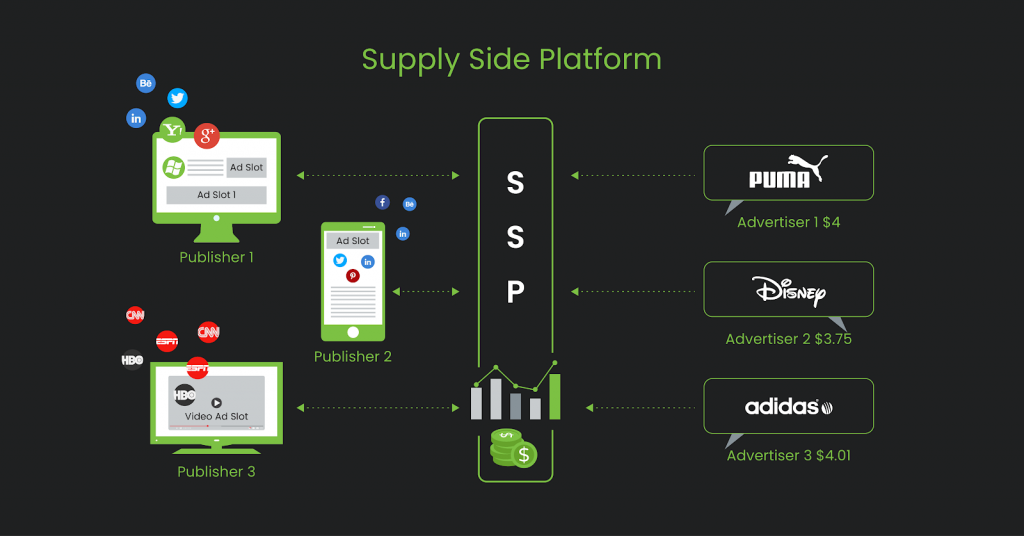
Advantages of Programmatic Ads
Transparency: Advertising in the traditional or Pre-programmatic digital era was not transparent to the Advertiser and Publisher. They did not have a clear sight of who bought the inventory or ad shown to the website. Resolving this issue, Programmatic advertising introduced transparency to the digital marketing marketplace. With programmatic advertising, publishers can access the demand and get a fair price for their ad spaces. At the same time, now advertisers can get precisely what they paid for. Programmatic platforms are optimized in real-time based on the extensive publisher’s data. It allows marketers and advertisers to aim at individual impressions instead of buying blocks of advertising. Auctioning may drive up the price of specific placements, but in the long run, it is a more cost-effective strategy for advertisers than direct deals.
Improved efficiency: Automated ad buying has dramatically improved the efficiency of digital advertising. Artificial intelligence and algorithms make the process of placing ads a lot simpler and more efficient. The ability to measure the performance of campaigns in real-time also helps advertisers make the necessary changes to their campaigns, which improves the efficiency of the campaigns.
Real-time data and insights: As mentioned above, programmatic advertisers don’t need to wait till the end of the campaign to make changes but can obtain data as soon as the campaign is launched. They can see where their ads are being displayed, how much engagement the campaign is receiving, and other vital insights. They can also measure, analyze, and optimize their ads and campaigns in real-time so that the campaigns perform better.
Flexibility: Programmatic marketing offers advertisers great flexibility for customizing their ad campaigns. Advertisers can decide how they want to place their ads as well as their budget. For example, they can choose to either pay only for the relevant impression that they receive or sign up for a minimum budget. Programmatic ad buying also enables to opt for a minimum number of impressions as well as ad inventory across publishers. Advertisers also have the option of optimizing their campaigns mid-way based on views, clicks, and conversions from the campaigns.
Wide Targeting options: Programmatic advertising uses extensive data and algorithms that allow advertisers to place targeted ads with high precision and accuracy. It allows marketers and advertisers to target audiences based on factors such as audience geolocation, age, behavior, search terms, categories, site visits, or even IP addresses. It also allows them to retarget customers after the site visitors have visited the advertiser’s site, which has improved conversions.
Wider reach: Programmatic advertising allows marketers and advertisers to reach out to a broader spectrum of target audiences across multiple platforms and multiple publisher websites at a lower cost compared to traditional forms of display advertising. Not only this, but marketers are also able to track the campaign’s reach. They can find out how many people have looked at the ad, where the audience was located, the demography of the audience, the time of the day they saw the ad, and much more.
Time for strategy development: This can be considered as an indirect advantage of using programmatic advertising. As programmatic eliminates the need for manual RFPs and long-drawn negotiations between the advertiser and the publisher due to automation, the buying and selling process becomes less time-consuming and streamlined. This, in turn, gives the marketing and sales teams more time to develop and test their strategies as well as sales programs for their most significant assets.
List of Best tools to use for Programmatic Ads
Lumascape of Display Advertising
Lumascape is like the periodic table, which provides knowledge on the components of advertising between an Advertiser and Publisher, and they are also evolving every time with a new Ad Tech component, or a big player will be adding to it.
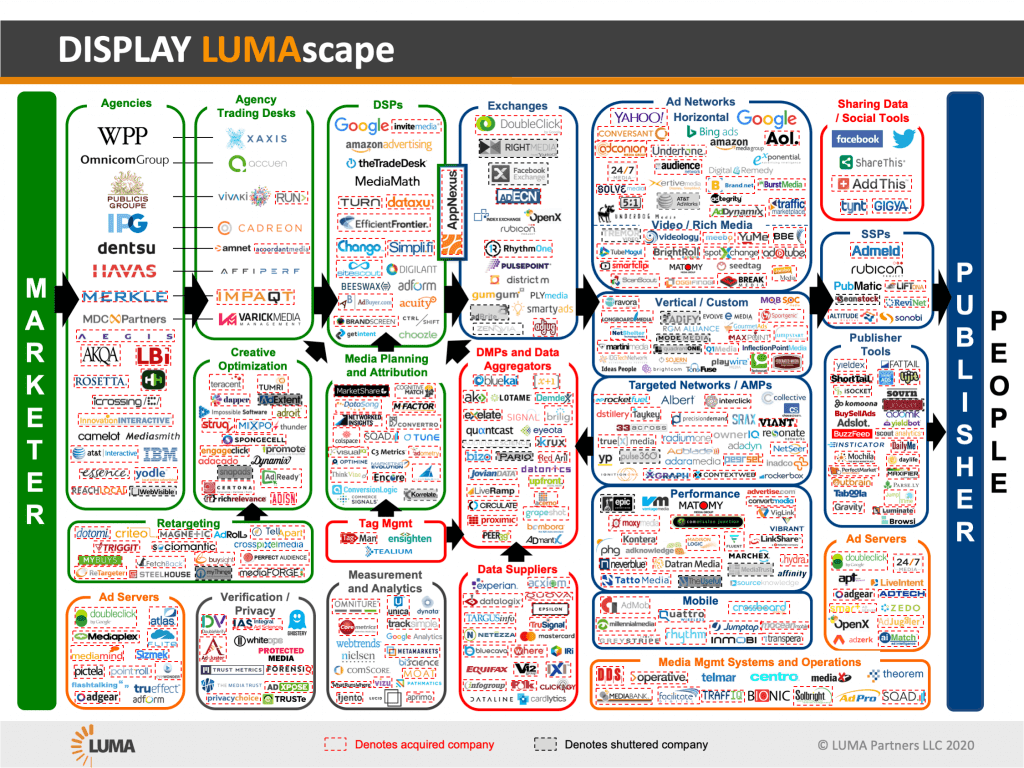
It may look quite messy but try to make the most of it so that we will go through into major players of each Ad Tech component of the Lumascape like DSP, SSP, Ad Exchange, etc.
Demand Side Platform
A demand-side platform (DSP) is an advertising technology platform that allows advertisers to work at brands and ad agencies to buy ad space on an impression-by-impression basis from publishers via supply-side platforms (SSPs) and ad exchanges. DSPs enable media buyers (advertisers and agencies) to purchase a range of inventory from many different publishers, all from one user interface.
A DSP is essentially a middle man but is responsible for far more than just the purchasing of available inventory.
Here are some of the main functions DSPs provide media buyers:
- Create, run, and manage several campaigns simultaneously across multiple SSPs and ad exchanges and control them from a single, centralized user interface.
- Auto-optimize (via algorithms) the campaigns to increase ROIs.
- Use 3rd-party data from DMPs to improve targeting.
- Provide real-time reporting via advanced analytics.
Some of the major DSP’s are
Display & Video 360
Display & Video 360 (DV360) is Google’s Demand Side Platform (DSP), providing the technology that allows advertisers to bid and buy inventory directly from publishers or ad exchanges outside of Google’s network.
- Efficiently and safely reach users at scale
- Extensive audience buying capabilities
- Insights-based reporting
- Consolidated workflow across the GMP
- Similar audiences’ option to select higher similarity or greater reach
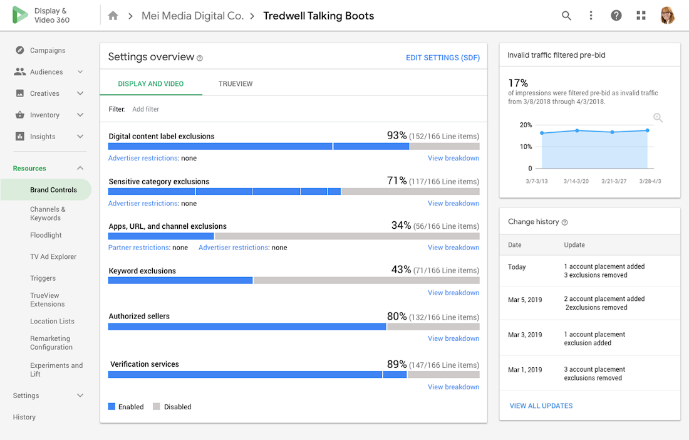
MediaMath
A pioneer in the industry introducing the first Demand-Side Platform (DSP) with the company’s founding in 2007, MediaMath is the only company of its kind to empower marketers with an extensible, open platform to unleash the power of goal-based marketing at scale, transparently across the enterprise.
- Brain Optimization Algorithm
- Watermark Revenue
- Retargeting
- 3rd-Party Data Integration
- 1st-Party Data Integration
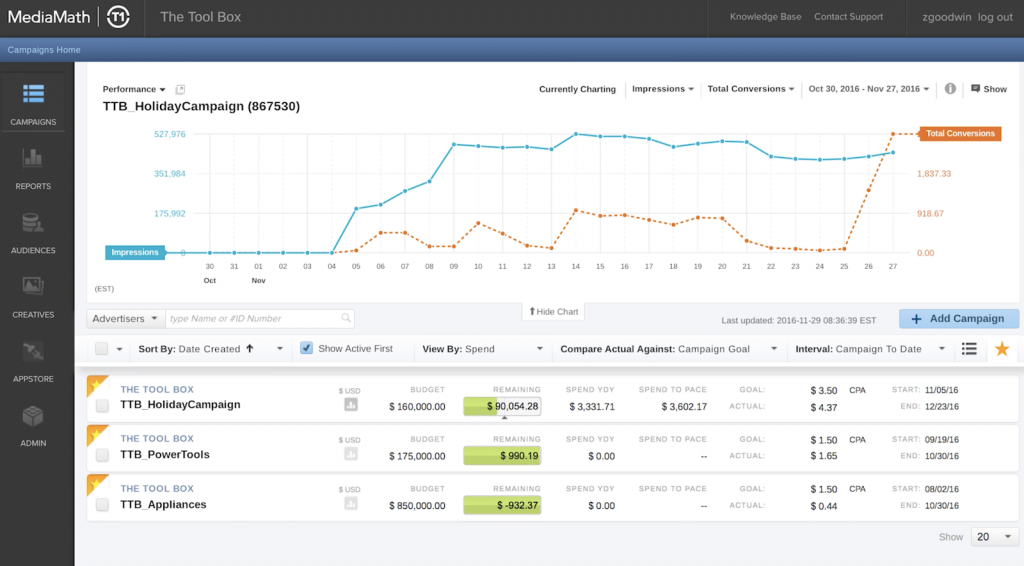
The Trade Desk
Currently, the most adapted DSP by the marketers is The Trade Desk (TTD). TTD empowers buyers at the campaign level with the most expressive bid capabilities in the market, full-funnel attribution, and complete reporting capability. This illustrates the consumer journey from initial impression to conversion.
- Audience forecasting tool
- Targeting
- Cross-Device Capabilities
- Bulk Editing
- Mobile & Display Rich Media Capabilities
- Bid-factoring is one of the more useful tools
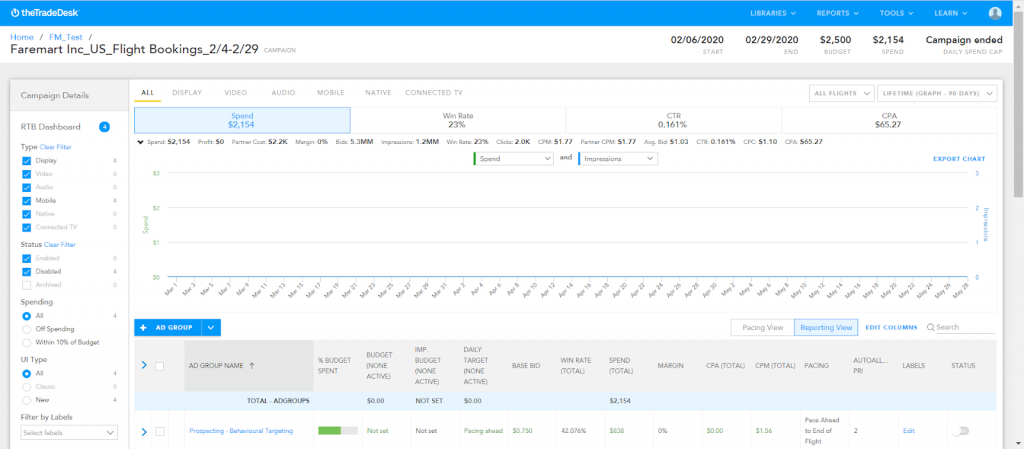
Adform
Leverage Adform’s DSP to reach your audience by first-party data, third-party data, ISP, location, behavior, context, device, and keywords to connect with the consumers most likely to engage, click or convert – wherever they are in the digital universe. Ideal for medium to large enterprises in local or global markets. Reach your desired audience with highly intelligent targeting using the formats of your choice using our advanced algorithms across a wide range of media with our DSP.
- Interface for buying 3rd party data allows us to buy data directly from selected providers or unified taxonomy.
- The tagging system is also very robust.
- The platform is easy to navigate and very user-friendly.
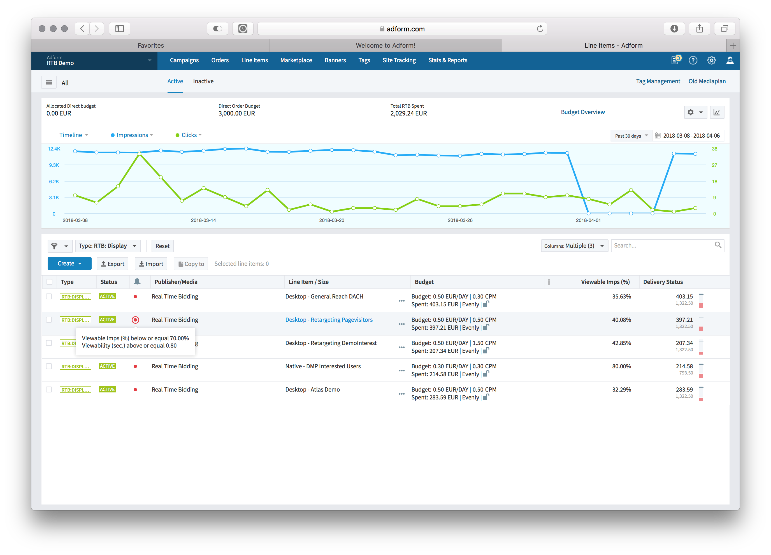
Amobee
Amobee Marketing Platform (formally Turn Marketing Platform) is a front runner in AdTech. It won several awards for incorporating machine learning and Artificial Intelligence to support predictive analytics & measurement technology. Omnichannel Campaign can automate planning and buy across digital media channels, formats, cross devices, and audiences.
- Omnichannel Campaign Dashboard helps to provide insight and analyzes the trends.
- Retargeting capabilities are powerful to bring the performance
- Ad Serving Capabilities to serve across all the medium and inventory.
- Batch Uploading feature is used to create, edit, and delete all the massive list of campaigns across the advertiser in a go.
- In-App Ads performance well compares to some of the other platforms.
Supply Side Platform
A supply-side platform is an advertising technology platform used by publishers to manage, sell, and optimize available inventory on their websites and mobile apps in an automated and efficient way. Using an SSP, publishers can show display, video, and native ads to their visitors, and monetize their website and apps. They connect to ad exchanges, ad networks, data-management platforms (DMPs) and demand-side platforms (DSPs) to sell ad inventory on behalf of publishers
SSP workflow
- A publisher makes its ad inventory available on an SSP.
- Each time the publisher’s webpage loads, an ad request is sent to multiple ad exchanges and, and sometimes demand-side platforms, either directly from an SSP or to an SSP via the publisher’s ad server.
- In the case of RTB media buys, various DSPs would place bids on the impression being offered by the publisher.
- The winning bid is then delivered to the website via the SSP and displayed to the visitor.
Major SSP’s are:
OpenX
OpenX’s vision is to unleash the full economic potential of digital media companies through superior advertising technology.
- They help scale and reach our target efficiently.
- The Trade Desk and OpenX work well together in PMP buys.
- Ability to micro-target the audience with a reasonable conversion rate.
- Easy to deploy and excellent customization ability.
Rubicon Project
Rubicon Supply platform is the leading independent advertising marketplace that connects sellers across a global landscape of trusted, high-quality buyers. Maximize yield for your inventory and audiences across all screens and formats along with the benefits that automation provides.
- Global presence helps to monetize the inventory across geographies.
- Easy and able to quickly review performance without the need to export to excel.
- Access to all potential demand sources while unifying demand to maximize yield.
PubMatic
PubMatic enables premium publishers to realize the full potential of their digital assets, and it also empowers independent app developers and publishers to control and maximize their digital advertising businesses. PubMatic’s publisher-first approach enables advertisers to maximize ROI by reaching and engaging their target audiences in brand-safe, premium environments across ad formats and devices.
- It has a high fill rate and competes at a high CPM level, which helps to bring yield to the publisher.
- Analytic capabilities and dashboards that allow the user to make decisions and not pull data.
- The workflow automation feature, as well as the real-time analytics aspect of the software most.
- PubMatic’s dual focus approach to transparency and building solutions helps them to be at the forefront.
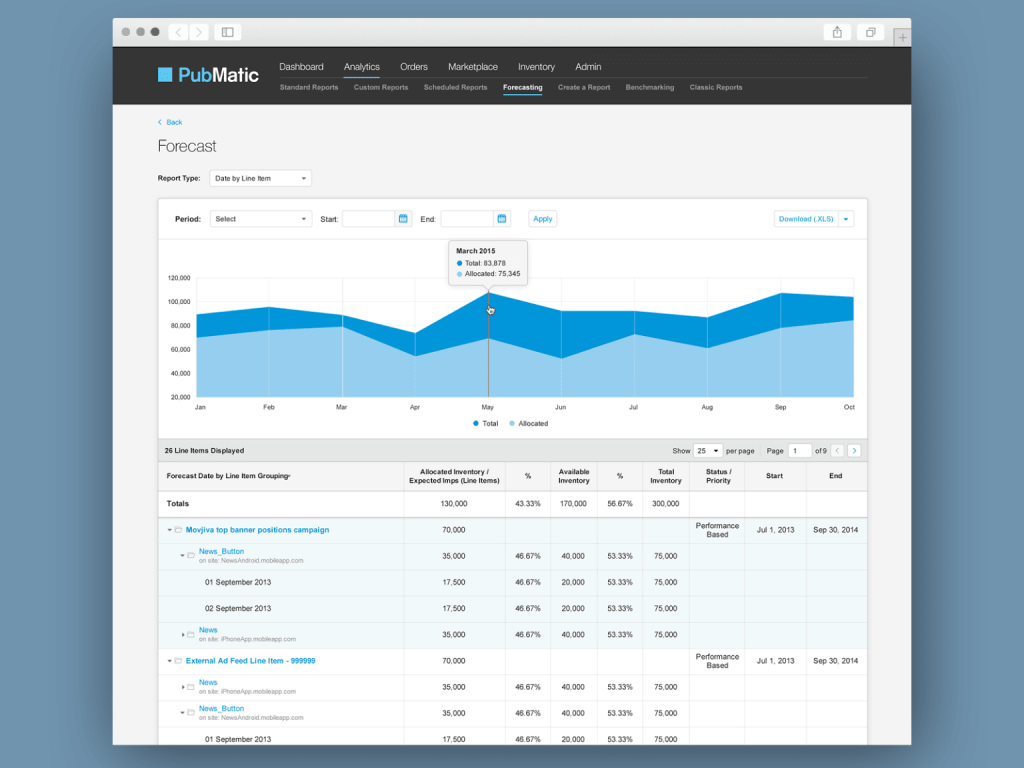
Google Ad Manager
Google Ad Manager (Formally DoubleClick for Publishers) is a complete ad revenue engine that helps publishers capture every impression across demand sources and channels. Seamless integration with DoubleClick Ad Exchange provides an instant connection to millions of quality advertisers, while the natively integrated sales management platform streamlines operations for maximized sales at minimized costs.
- Almost a universal platform because of its most familiar one on the digital landscape.
- Able to set prioritization to ads from groups to every social media account, keywords, content type, etc.
- Fill unsold spots with google ads, or sell your specific ads to local clients.
- Reporting is also very straightforward and straightforward to understand, so it is nice when our advertisers Request updates on their campaign, we can provide those at any time.
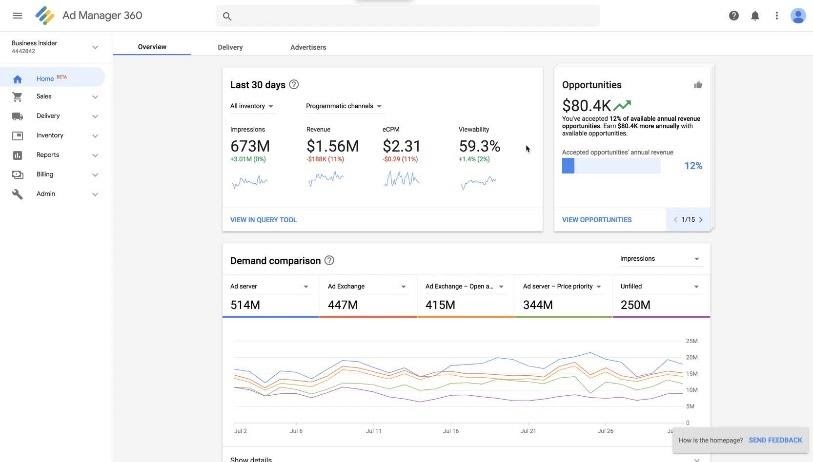
MoPub
MoPub is a hosted ad serving solution built specifically for mobile publishers.
- MoPub can be integrated with Android Studio and Vulgle SDK to include advertising in mobile applications.
- MoPub offers a variety of features that make app monetization organized.
- MoPub has been providing mobile publishers with high-level assistance globally, which has been helping to maximize their revenue.
- MoPub has attracted lots of desirable audiences to our Mobile Application.
- Enterprise Scalability and data transparency.
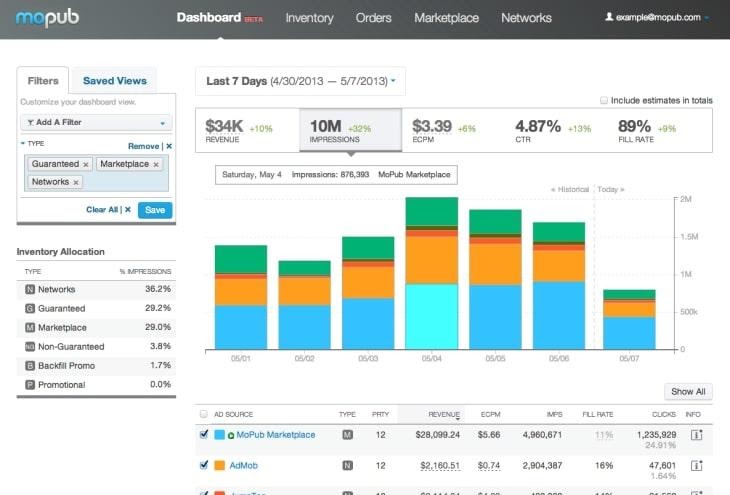
Ad Exchange
Ad Exchanges are digital marketplaces where publishers and advertisers come together to trade digital ad inventory such as a display, native, video, mobile, and in-app. Buying and selling happen in real-time auctions, empowered by RTB (real-time bidding) technology. The Ad Exchange is an auction mediation mechanism that does not serve either the buyer or the seller side; it is an autonomous platform that facilitates programmatic ad buying.
Ad Exchange Work Flow:
- A user visits a publisher site, and the publisher informs that inventory is available to the Ad Exchange through SSP. Also, the publisher provides full details on the inventory, such as page location, URL, audience, topics, and so forth.
- Then, the Ad Exchange sends a bid request to DSPs and Ad Networks. Each DSP would inspect the bid request and all related information (demographics, user ID, geolocation, frequency capping, dayparting, and other targeting options). After verifying, it will decide whether the impression meets the advertiser requirements. If so, DSP would send a reply to the Ad Exchange with a maximum bid amount and the location of the ad copy that is to be placed onto the available ad space.
- The Ad Exchange reviews all the advertisers’ bids on the impression. The Ad Exchange eliminates the advertisers who do not meet the publisher’s requirements. For instance, the ad slot is available on the Chinese website, and a publisher sets a restriction to allow Chinese-language ads only. Therefore, the Ad Exchange would eliminate all non-Chinese ads from the auction.
- Having gathered all data, Ad Exchange analyzes bids and sells the impression to the highest bidder.
- The winning ad appears on the publisher’s website in front of the user. The entire RTB process takes place in 100 milliseconds, just about when it takes a webpage to load. The process does not interfere with user experience and does not decrease page loading speed.
Major Ad Exchanges
Rubicon Project
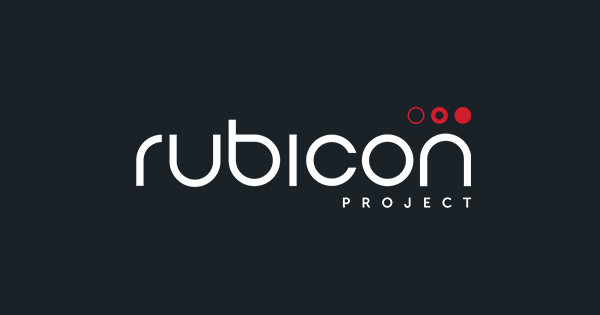
Rubicon Project started as a Seller Side Platform (SSP) and then turned into an ad exchange. Rubicon Project is one of the most transparent global platforms that has been widely used by top publishers like The Wall Street Journal, Conde` Nast, GAMELOFT, eBay, VOX MEDIA, and Turner. Bringing premium buyers to your website, the unified auction platform of Rubicon assures a publisher’s brand safety, higher yield in terms of revenue and impressions.
- Its real-time exchange that optimizes towards revenue for the publishers and enables access to premium advertisers across the globe.
- Rubicon Project offers premium buyers, higher CPMs, and a greater fill rate by setting the priority level of a PMP deal, etc.
- Its global programmatic video marketplace allows monetization of video ad inventory on-site & delivers the high-quality video ad content, thus high completion rates.
PubMatic
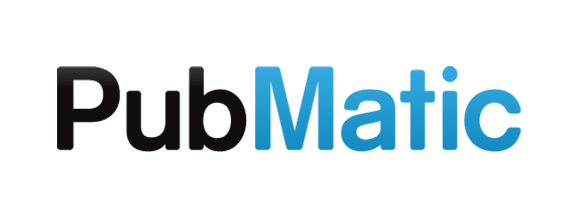
PubMatic has a unique advanced full-stack technology and data-driven monetization platform. PubMatic’s strategic decisions enable premium advertisers to reach publishers at scale. The ad exchange platform is equipped with a single dashboard that makes it easier for publishers to view their ad inventories, simplify ad workflows, and increase efficiency daily with 55 billion Ad impressions. Some of the premium publishers of PubMatic are Times Internet, Livingly Media, and many others, which use it to bring demand from all parts of the world.
- PubMatic Cloud offers holistic optimization & customizable platform as a Service (PaaS), enabling a publisher to take advantage of DMP integrations, Advanced Analytics, Inventory Quality Controls, and many more services.
- PubMatic’s Ad Exchange AdaptADX makes premium media inventories available to advertisers/agencies at scale with the help of programmatic channels on all devices and all formats.
- PubMatic’s PMP-Guaranteed and Targeted model, combined with its OpenRTB platform allows publishers to sell their ad inventories programmatically and gain complete control over factors that have access to their audiences.
DoubleClick AdX
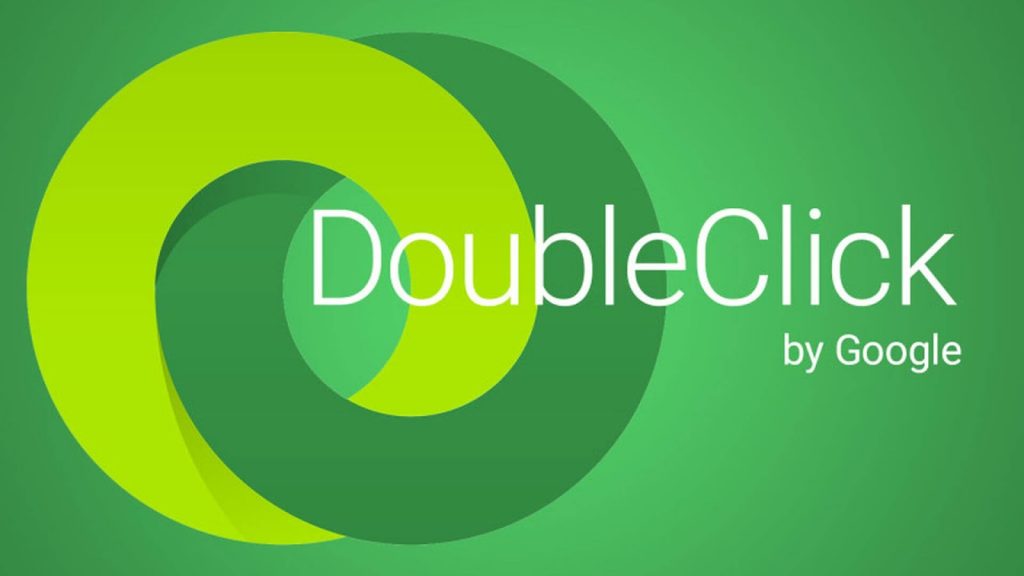
Google AdX, the largest programmatic ad exchange, recently moved to conduct a first-price auction instead of the second-price auction and sells display advertising space in real-time. DoubleClick Ad Exchange is the premium version of Google’s AdSense built for premium publishers and advertisers.
- One of the best advantages of Google’s DoubleClick over another ad exchange is that it has an easy installation process with 0 costs.
- DoubleClick allows publishers to display a wide range of ad formats to their visitors, and thus improving user experiences.
- Google’s DoubleClick Deals Interface enables a publisher to set up preferred deals for fixed CPMs with advertisers or private auctions with price floors with multiple buyers.
- Also, Google’s AdX includes a dynamic price floor which automatically adjusts the price floor for ad inventory based on demand from buyers.
- Google’s Ad Exchange offers account-level filtering and rule-based filtering, which includes URL blocking, Google certified Ad Networks, sensitive category blocking, advertisers blocking, cookies & data usage blocking, and so on.
AppNexus
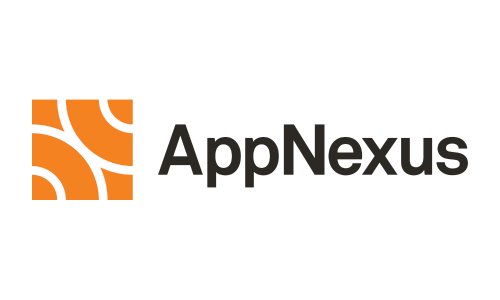
AppNexus Exchange is a most-advanced platform that enables publishers to increase the yield of their inventories in real-time. The best features of the AppNexus’ programmatic ad exchange is its cloud-based software platform that improves the revenue for publishers by connecting them with third-party DSPs – all over the world. AppNexus Ad Exchange has been used by many top publishers, including Microsoft, MiQ, Axel Springer, Underdog Media, and many more.
- AppNexus’ Publisher suite with open-source prebid.js code creates a stack that allows holistic optimization.
- Its log-level data enables publishers to validate its inventories and checks whether these inventories are being sold relatively in an open marketplace.
- AppNexus’ algorithm “Forecast Shaped Pacing” enables direct campaigns to more evenly distribute budgets throughout the day, which consequently opens up more inventories to programmatic demand during peak hours.
How to get started on programmatic advertising:
When an advertiser taps web space, he can reach out to the desired audiences, and the same way users enjoy more relevant ad experience. The programmatic ecosystem is the most vibrant advertising model in the current digital era.
Mostly all users or ordinary people might always think about how an advertiser is aware of his interest and behavior. Also, what kind of information is shared with them to show the ads are engaging the user a lot. This is due to various factors like:
- Data Marketer use
- Choosing the right platform
- Engaging message through Ads
Data: How to choose the right data
“Data is the oil,” the tag which has been heard from the Marketers, Data Scientists, and all the online certification platforms on Data Science and Data Analytics. But that’s the fact. Data is the oil. Assuming that the Programmatic algorithm is an engine and data is a lubricator, it helps the algorithm to process and makes a faster & smarter decision on media buying.
Markets are required to have the right set of data to feed into the Programmatic system, which they collect from various sources like the 1st party, 2nd party, and 3rd party data. In that, a cost-effective and more interesting audience will be available in the 1st and 2nd party.
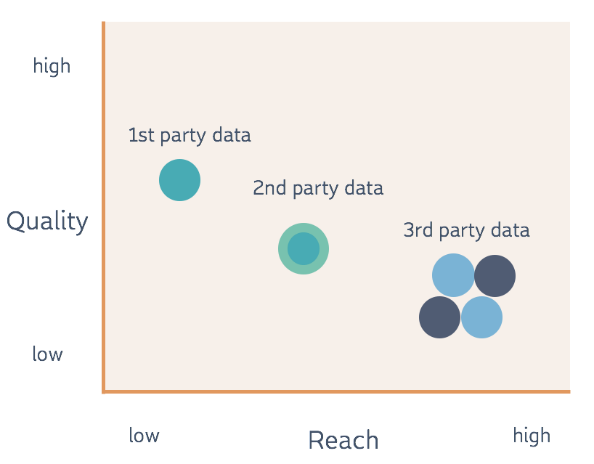
For example, let’s assume an Advertiser belongs to a travel domain, and he wants to target the people who are looking for Domestic or International flights to go back to their work location. Let’s see how data-driven advertising methods help to target the user.
1st Party data
The advertiser collects first-party data through their Website, App, Social media platforms, or through surveys, customer feedback, and other sources. All the customer information stored in the Advertisers Customer Relationship Management (CRM) tool or Customer Data Platform (CDP) database. Marketers are giving high priority to the First-party since it is the most reliable and valuable source of data. According to eMarketer, 75% of EU marketers and 85% of the USA marketers give high priority to First-party data.
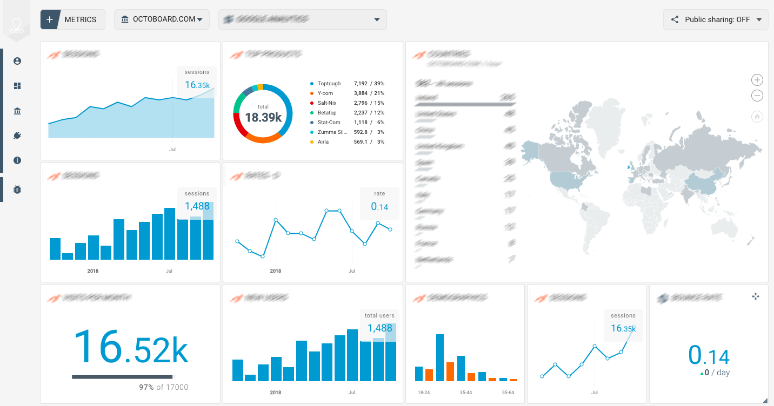
First-party data is one of the most valuable data, so every company should consider collecting the data and make profits from it. It can also be collected for free, which makes it cost-effective and can be easily segmented to deliver your users’ personalized experiences and display them relevant ads. Also, it can be monetized by using a Data Management Platform. It is considered as any company not collecting and activating 1st party data from their properties is leaving money on the table. In further, how first-party data is collected through Pixel will be discussed in the later section.
The first-party data can include information as following:
- demography
- visited websites & interactions
- purchase history
- interests
- time spent on the website and many more
So, when a user searches for flight tickets at less cost and lands at the Advertiser site to check on the available flight and price but he leaves the site without booking the ticket. The advertiser can use the data from his CRM tool related to the user behavior on the site, which he collected through dropping the first-party cookie of his to the user system; based on this, the advertiser can retarget this user who had shown interest to check the flight details.
2nd Party Data
Second-party data has been purchased from the company that owns first-party data. The seller collects data straight from their audience, and there won’t be any middle man in the transaction; it all comes from one source. You need to seek out companies that can provide the data you need and build a relationship with them since you can feel confident in its accuracy.
Second-party data includes data from many of the same sources first-party data comes from, such as:
- Activity on websites
- Mobile app usage
- Social media
- Customer surveys
Though 2nd party data is a relatively new concept compared to 1st and 3rd party data, it can be beneficial if you find the right data set, so it may be worth exploring.
The advertiser purchases the first-party audience data (mail id, number, frequent travel routes, etc.) from Airlines or other aggregators, and it is called as second-party data. Second-party data has most of the first-party data’s positive attributes, so it helps target the audience, which is relevant and meets the credit card criteria.
3rd party data
Third-party data are bought from outside sources that are not the original collectors of that data. Instead, it’s from giant data aggregators that pull it from various other platforms and websites where it was generated. These aggregators pay publishers and other data owners for their 1st party data and make it into one extensive data set and sell it as 3rd party data. These 3rd party data are aggregated into a data set in the 3rd party platform called DMP, some of the most commonly known DMP’s are LiveRamp, Lotame, ORACLE, Exelate, etc.
Advertisers to increase the sale of the credit card can use the 3rd party audience to reach relevant users.
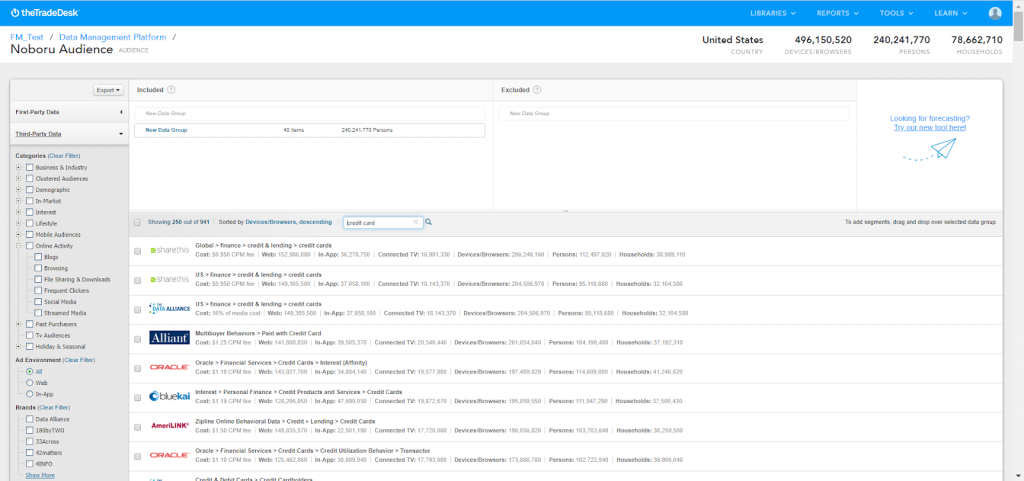
Data-driven advertising helps to reach a niche audience, and it helps to uplift the performance. Still, the catch is that we need to understand the market and competitor to choose the right data to target the user. Data only can perform alone in Programmatic. The platform we want and the creativity in the message we convey plays a significant role.
So, when an Advertiser or Marketer chooses the right set of 3rd party audiences from the platform, it will help to reach the user with the right message to recall the brand and drive them back to the conversion path.
Choosing the Right Platform
Whether an Advertiser uses an In-house Marketing team or opting for a Marketing Agency like WPP, OMD, IPG, Noboru World, etc. the marketer needs to understand the requirement of client and competitor performing in that market. Then marketer needs to choose the active channels of advertising. If they decide to reach the audience through Programmatic display advertising, they need to decide the Demand Side Platform (DSP) and other supporting Ad-techs like Ad verification vendors or 3rd party creative Ad servers.
Decide on a DSP
Demand-side platforms allow us to connect multiple buyers and sellers with a relevant interest. Then the programmatic protocol will decide to approve the transaction or not. This step takes place for every impression. Today, each Ad placement in a DSP refines around 1 MM ad opportunities every second to deliver the ads. To handle this robust process, we need to choose the right DSP for some of the key factors we need to consider when we take the license of a DSP are
- Support
- Cost
- Data
- Transparency
- Auto Optimization
- Queries per Second (QPS)
- Real-time analytics
- Basic Targeting Option of DSP
- Inventory
Support: N number of DSPs in the market might also be cost-effective as per the client requirement. But certain things need to be taken care of before buying a seat on any platform. It is their support because the marketer does not need to be familiar with the platform. But if there is proper support with the platform, it will be helpful and save a lot of time and money. If a platform has the following support, it will be the first platform to check into the list:
- Wiki or Support Page: A detailed documentation with image, audio, video, crisp text, and guidelines on platform restriction, will help even a person new to traffic the campaign on the DSP. Today, most DSPs have clear documentation of their process, and rolling out a newsletter on the latest updates makes the most trusted platforms. Ex: The Trade Desk is having both a knowledge portal (process-related) and Developer Portal (Product Related)

- Live Support: There are few DSPs who would provide live chat support on regular working days on critical issues like delivery concern, tips, and tricks to set up the campaign, Performance Optimizations. It helped to pull extensive reports that would reduce the turnaround time. Ex: Google is one of the DSP that provides live Tech support.
- Dedicated AM: When an account is taken from a Platform, they will assign dedicated AM who will provide support and training, AM will be like one-stop for any technical or process-related queries.
One thing needs to be sure: if the service will be charged and whether there is any limitation on the service before choosing a platform.
Cost: Every DSP will charge something for its service. DSPs pricing is divided into two types: paid and free. Paid platforms will have a fixed monthly or annual spending to continue the agreement. They would charge a fixed amount, other than that they also have fees for serving the ads included in the CPM bid and also for the 3rd party data being used. Free DSP’s will charge only for the inventory bought through them. So, it is preferred to start with free DSP’s
Data: Data is the oil for any programmatic platforms, and advertisers rely on the data. The audience will be the key to driving performance if a Marketer can combine and use 1st and 3rd parties. The DSP platform is all about “test and learn” which is the most relevant and performing audience group. A Marketer needs to look at the audience group from the list of targets, which bring performance at an affordable rate. So, the platform should have integration with all major DMP and have the option to integrate first-party data to it.
Transparency: A demand-side platform reveals all the supply-side chain participants are bringing much-needed clarity to the whole programmatic landscape. With the programmatic advertising platform’s help, media buyers will be able to see how the budget trickles down to the publishers’ pockets and reallocates their ad spend to the best-performing traffic sources.
Automated Optimization: It is another valuable feature of the DSP to corner the ad tech market. The vast majority of the DSPs in advertising has developed automated ad optimization tools like bidding autopilot to cut advertisers’ time losses.
Queries per second (QPS): It is the metric reflecting how many times a DSP gets called to make a bid on an ad placement to reach a user. More QPS in a DSP means the higher speed of analyzing and acting on those bids. It’s a simple numbers game: the greater the scale of an ad campaign – the higher bidding visibility it will drive. It provides programmatic algorithms with more information.
After making a bid to reach a unique user at a specific price, the demand-side platform learns if the price was accepted. If the price was not accepted, the DSP is notified that it may require a higher rate to win future bids. However, many DSPs have poor traffic filtering options, which means they can bid on the same publisher’s traffic across multiple ad exchanges. The high amount of QPS means duplicate-free impressions.
Real-time analytics: Immediate actions are sewn into a demand-side platform definition. The tool’s interface should be as close to real-time as possible since you need the most recent stats to analyze campaign performance and make timely decisions—a feature of DSP providers that you consider.
Basic Targeting Option of DSP: The more specific targeting tools the DSP offers, the better. Before setting up your ad campaign, explore what is under the hood. If the DSP supports granular targeting options that enable framing your audience precisely, feel free to proceed with it. Here are the basic targeting options the demand-side platform should offer:
- Browser: Google Chrome, Mozilla, IE 11, Opera, etc.
- OS /OS version: Android, IOS, Mac OS X, Windows 8.1, Windows 7, etc.
- Device model: iPad Air, iPhone 11, Samsung S9, Mi A3, etc.
- Language: English, Spanish, French, Arabic, etc.
- Time of day: Targeting 6 PM to 10 PM Monday to Friday to reach prime time audience
- Carrier code: Sprint, AT&T, Verizon, Vodafone, etc.
- Geolocation: Targeting New York, London, Tokyo, Miami, etc.
- Frequency: A user needs to see an Ad for three times per day (1×3/day)
- Domain URL: Targeting or excluding the list of URLs only.
- App name: Targeting or excluding the list of Apps only.
Whitelists & Blacklists: If you already know which specific sites drive the best performance, put them together, and download a whitelist to your DSP account.
Inventory: A huge advantage of advertising with DSP is that media buyers don’t have to reach every publisher separately. Adding a whitelist to ad campaigns allows it to access hundreds of hard-to-reach websites through a single account.
Whether an Advertiser is eager to boost their sale or driving traffic to their site on the mobile device or still believe in the power of desktop advertising, the DSP has something to offer you. Most top demand-side platforms that we listed above have both mobile and desktop inventory available. In the coming years, smart devices like mobile and IoT devices will play a significant share of inventory, So it wise to choose a platform with those kinds of inventories available for targeting instead of relying on a traditional display or video inventory.
Choose the Deal type
Most of the Advertisers think that Real-Time Bidding is the only protocol being used to buy the Ad space in the Programmatic ecosystem, but it’s not right. There four major types of a deal in the programmatic ecosystem and they are:
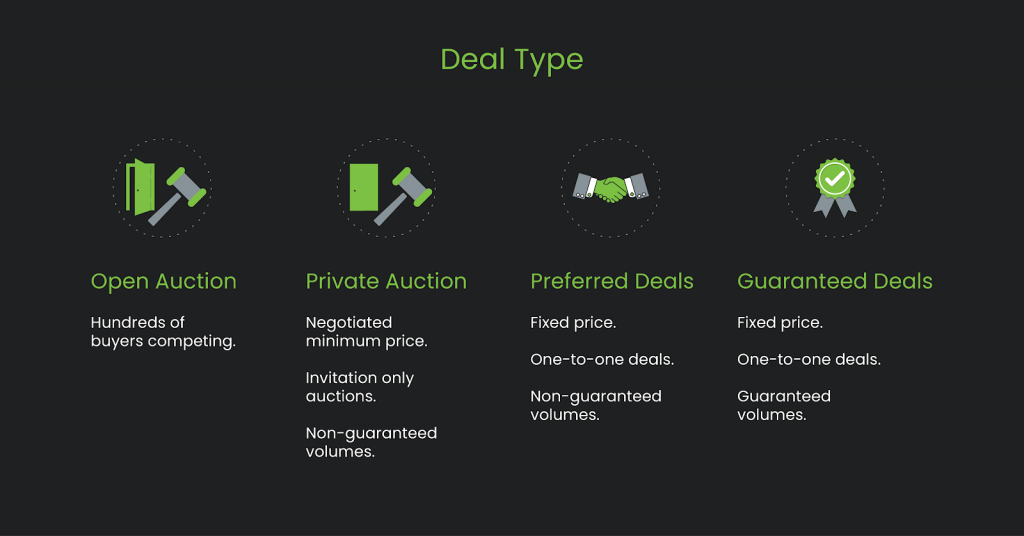
Real-time Bidding: It is the most popular media buying method because of the availability of a pool of inventory compared to other media buying types. Due to high competition, advertisers and publishers have benefits such as publishers getting high CPM, whereas advertisers reach the most relevant audience from the pool of users.
Preferred Deal: It is an agreement between an Advertiser and a Publisher to give first preference to the advertiser to sell the ad space if the inventory doesn’t meet the advertiser requirement or time out then the inventory will be sold out in open auction (RTB).
Private Auction: Private auction is a closed invite-only auction where the advertiser with invite-only can take place in the auction to buy the inventory.
Guaranteed Deal: Guaranteed Deals are similar to the traditional direct sale where the advertiser and publisher signs an agreement with a fixed amount of inventory, but the difference between traditional and programmatic advertising is that the sales process will be automated.
Engaging message through Ads
Marketers’ goal is to deliver the message of the advertiser to the mass audience in an engaging way. In the previous section, Power of Data and choosing the Right platform is discussed; here, let’s see how effectively a Message can be delivered through Programmatic Advertising.
“Products are made in factories, but brands are made in the hearts of the people.”
– Piyush Pandey, CCO Ogilvy
In programmatic advertising, we can leverage the data as required to build the ads and deliver them to the right users. It can be used to reach wider audiences across all the devices from the compact device in hand called mobile, to Smart TV/OTT and the big Digital Billboard on the street.
Display Ads
Display advertising deals with both image and text banner ads, which can be made static or interactive. Programmatic display advertising platforms can buy these ads from any website or app or search engine that supports them. Banner Ads can be built as static ads or Interactive Html5 Ads.
Banner ads dimensions should be chosen as per the device that has been targeted in Programmatic Advertising. Some of the commonly used Ads dimensions based on the devices are
Desktop/Tablet: 300×250, 160×600, 728×90, 300×600,120×600
Mobile: 300×250, 320×50, 300×50
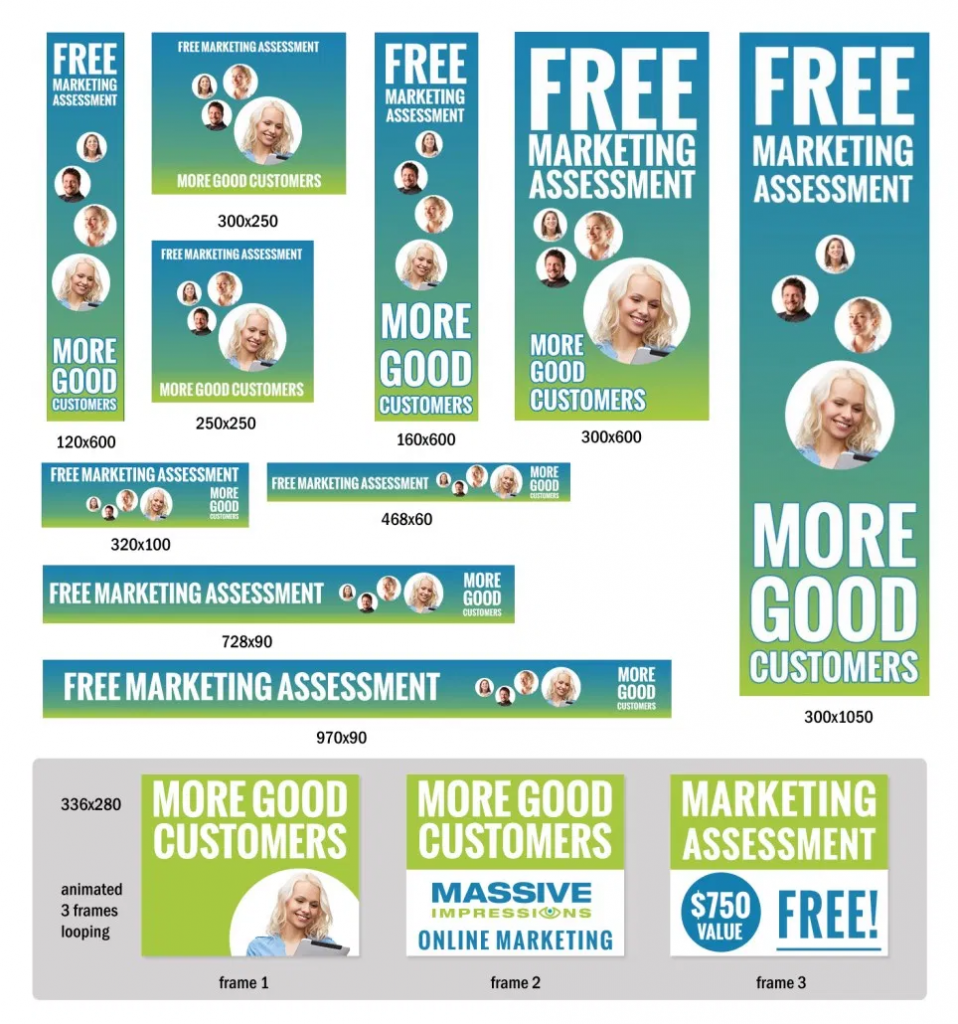
Video Ads
Programmatic marketing and buying services for video ads allow you to utilize video ads that run before, during, and after website and social media content. Video Ads help to achieve brand awareness. Video creatives in programmatic are classified into three types, and they are:
- In-stream: Ad will play within the player of the site, and they can be with or without skip
- Out-Stream: Rare format of the video ad, which is mostly used for the publisher who doesn’t have a video player, an SDK helps the publisher with the player and the creative loads into it.
- Bumper: The creative with Max 6 second duration is called a bumper ad. It is now being used in Google Marketing Platform (GMP) ads only.
Native Ads
Native ads are designed to fit the presentation of a specific platform, including social media platforms. Programmatic advertising software can buy native ads across channels.
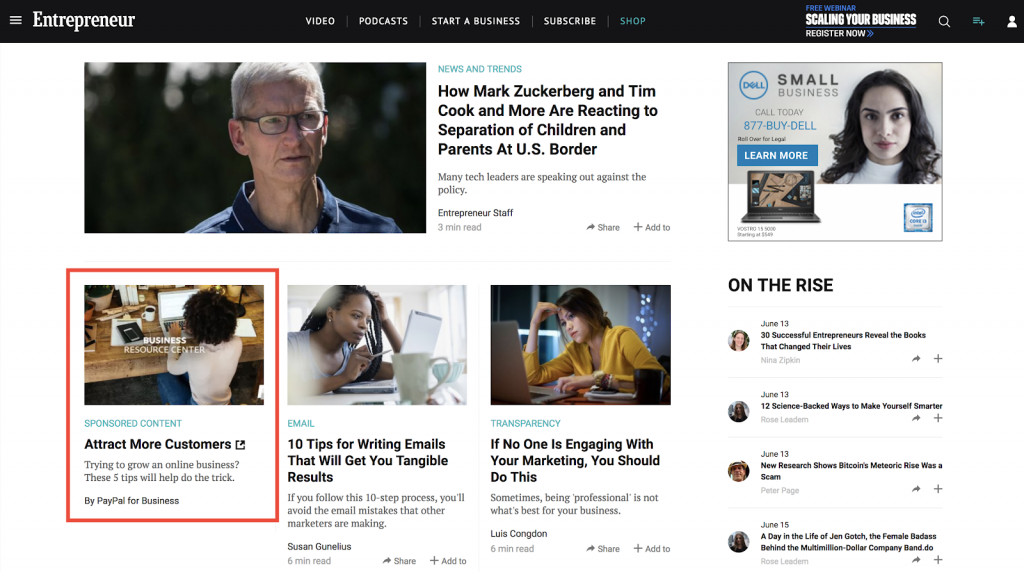
Connected TV Ads
Connected TV combines the efficiency and targeting of programmatic with the broad appeal of TV advertising. Marketers looking to reach engaged audiences while watching TV through the Internet are turning to CTV to boost campaign performance.
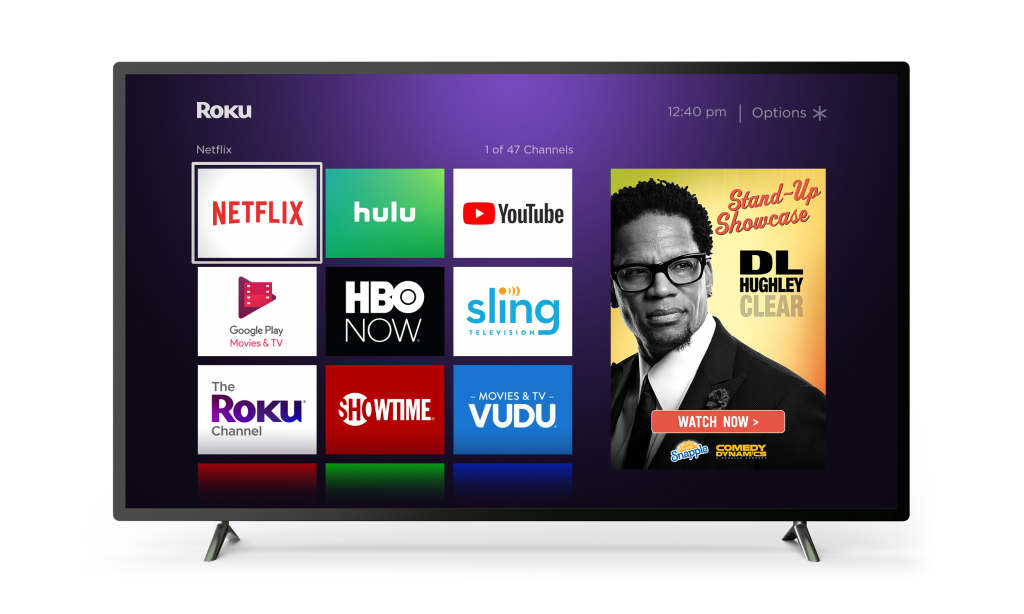
Programmatic platforms support most of the creative formats and do tag certification with the 3rd party to make sure discrepancies are in control if those tags are being used for the campaigns.
Dynamic Creative Optimization
“The future of marketing is being able to balance creativity and data”
– Lis Blair, EasyJet CMO.
Inventions made when a brain’s Left side (Logical) & Right side (creative) work together will always be path-breaking. Similarly, when creativity combined with data, it brings maximum impact.
Dynamic creative optimization is all about using data sources to enhance user ad viewing experience by building the Ad sets with relevant audience groups. Real-time analytics, real-time testing, and creative optimization bring hyper-relevant dynamic display ads.
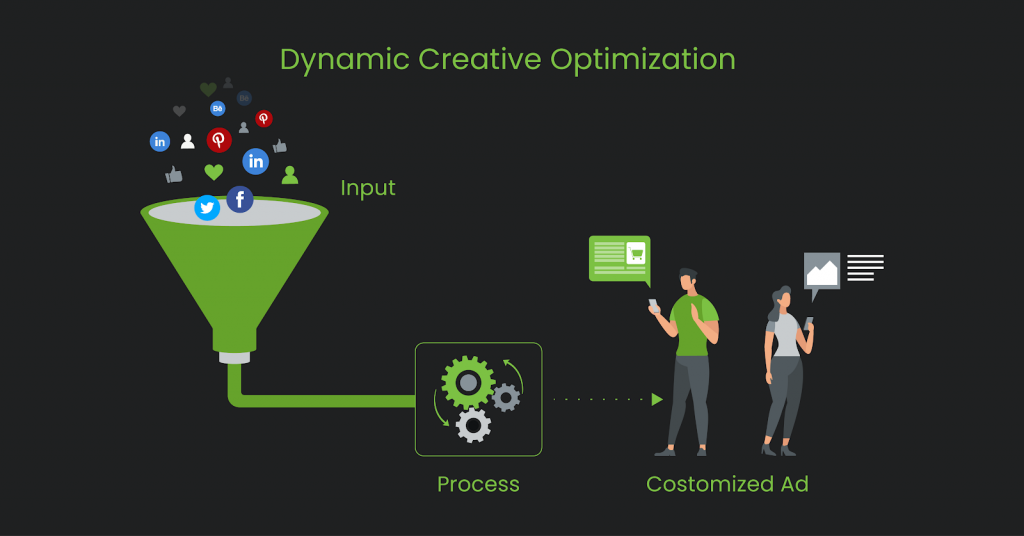
For example, When a user visits an E-commerce site in search of any product or went till adding to the cart but purchase not completed. If the advertiser uses DCO, it will produce banners, which will show the most suitable imagery for a specific viewer based on the products which the user surfed or added to the cart. It is all about using data to personalize advertising.
DCO uses smart feeds: the ad knows who the viewer is and responds by selecting the best creative combination. This responsive feed – rather than a regular feed – does not change the creative elements but instead chooses the best message for the viewer from pre-made elements.
Your ad-tech stack in harmony
DCO combines inputs from your creative management platform (CMP), data management platform (DMP), and demand-side platforms (DSPs) with an algorithm. Picking the best combination of a creative to put in front of the viewer, based on first and third-party data sources. Also, it will optimize this combination of elements as the campaign progresses automatically. DCO Advertiser runs a campaign like a regular programmatic campaign in DSP. For example, if the required KPI click-through rate (CTR) is lower than another ad version, DCO will stop showing a particular combination of creative.
Types of DCO
Dynamic: An DCO Algorithm works on mapping the right predefined dynamic Ad elements for each data-feed. This type of DCO offers more opportunity for engaging, rich media designs, creative optimization, and is simple to set-up and scale using a CMP. It can be performed without the need for complex coding.
Static units: a single DCO powered ad unit that uses an algorithm to select the creative shown “on-the-fly.” It is essentially a static shell unit that is built according to the viewer. However, this approach takes much more time to prepare and requires coding – a lot of coding. It is also less flexible in terms of creative design, uses static templates, and is challenging to optimize retroactivity. It is a heavily manual process to set-up.
The future of DCO and advertising
Dynamic creative optimization is finding its way into all sorts of fascinating applications. Already, streaming services such as Netflix and Spotify, are using the same technology to enhance and personalize internal advertisements. While expecting to see DCO, enhanced voice search ads enter the mainstream.
Advancement of AI and its Influence
Artificial Intelligence development will scale display production beyond human capability. Thus the capacity for DCO is set to personalize further. Potentially, with on-the-fly personalized copy and even creative video constructed on-the-fly. However, those advances are years away! Ultimately, dynamic creative optimization is set to offer ever more tantalizing possibilities for marketers.
Pixels
Generally, a 1×1 image that is loaded when a user lands a website or an Ad displayed is called Pixels. The marketer collects the data through various means, but when it comes to users’ Web behavior, Pixel plays a vital role in it. These pixels are placed on the advertiser’s website homepage and other channel pages. They are to track the behavioral data and other data to build audience grouping. First, let’s look at types of pixel formats.
Pixels are used in three different formats, based on the type of Pixel the depth of data collection would differ.
- Image Pixel
- IFrame Pixel
- Java Script (JS) Pixel
Image Pixel:
A static pixel with minimal functionality is only used to track the user who visited the site recently and keep the browser experience’s personalized experience by loading the cookie into the system. If a pixel is within the <img……./> tag and you can locate the exact Pixel in src=”” element of the tag.

Iframe Pixel:
Pixel loads within the inline frame are used to have more tracking capability than the static IMG Pixel. They load independently from other components of the page and even when a user blocks JS in browser IFrame loads.

JS pixel
JavaScript Pixels can track in-depth data required by the Advertiser or Marketer to build a strategy or group user-based data with relevance to the advertiser’s message. It will have less load on the server.
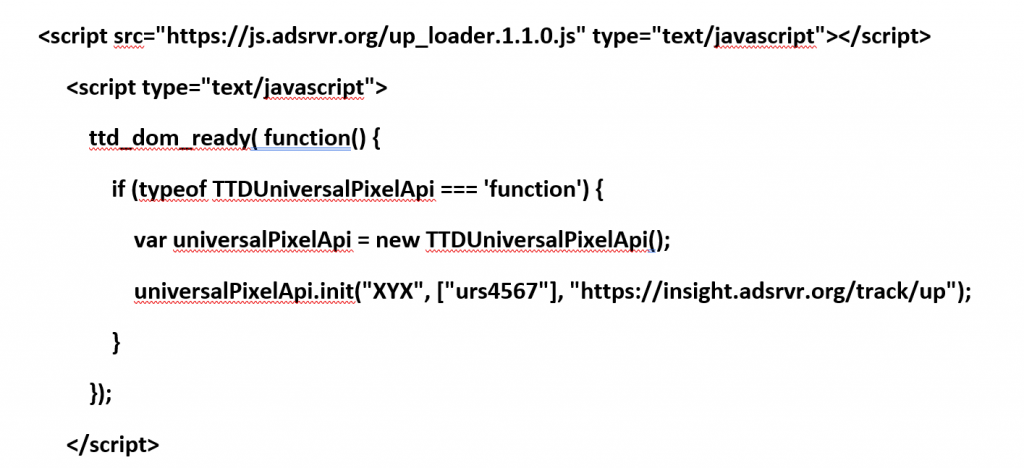
An Advertiser website or app holds two types of pixels, and they are First-party and Third-party pixels.
In that First party, the Pixel is default beacon, which fires when a user visits the site or app. It was configured in the CRM tools, so the cookies can only be founded on the website while checking through the inspect element. The data collected from the first-party cookies will be stored to their CRM, CDP tools can be directly used to target or can be pushed to DMP or directly to DSP to focus the more relevant users on the website or app.
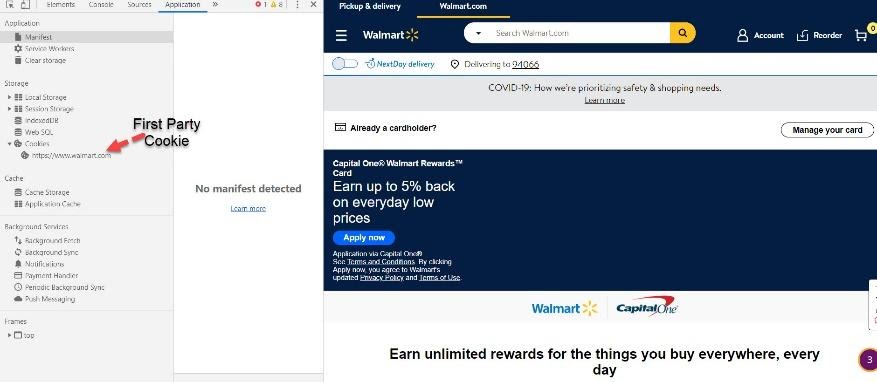
The Third-party pixels are those created by the platform which a marketer works with. These pixels play a significant role in reaching out to a niche audience based on the user profile data collected through it.
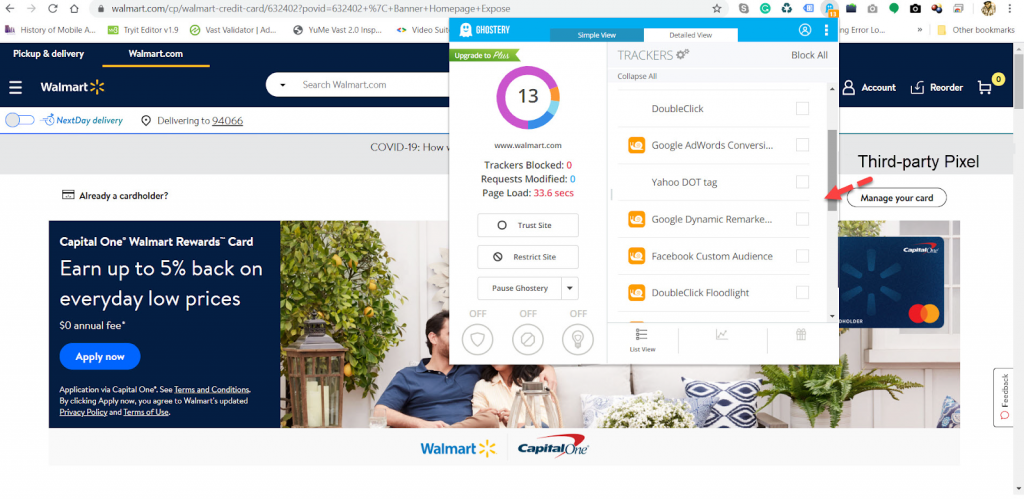
There are two types of third-party pixels which are being widely used in digital marketing, and they are:
- Retargeting
- Conversion
Retargeting Pixel: The Pixel has been used to track the people who visited respective pages and helps to retarget the ads to whichever site they visit. Retargeting Pixel use to target the user until the Pixel stay at their local and they are in the same network
If a user clears the cookies from their local retargeting, it won’t work for that user until he revisits the site and a new pixel is loaded into their system.
There is a concept called Negative Retargeting, which helps to target new users instead of targeting the same user who already visited or made necessary action on the site. In Negative Retargeting, the marketer will exclude the pixels user alone.
Conversion:
Conversion Pixels are those used to track the revenue or the required action (form sign-up, Booking Appointment, etc.). As seen above, we can use it for negative retargeting to avoid showing the ads to the user who already made the purchase. A conversion pixel will be mostly Order confirmation or Thank You page of a site.
Optimize toward the Goal
The programmatic campaign has an option to auto-optimize, but the marketer has requirements for manual optimization. After setting up the campaign successfully, marketers need to monitor the campaigns using the platform analytics widget or pull the raw report and analyze the data to understand the issues with the campaign and how to mitigate it.
Marketers will always closely monitor the campaigns and have two areas where they need to work which are delivery and performance.
Pacing
Deliveries of the campaign rely on how it is pacing a continuous flight period. If the campaign has a goal to deliver $10,000 in 10 days, it needs to deliver $1000 each day. Once the campaign completed day five and delivered $4200, the campaign is under pacing. If it delivered $ 5550, meaning it is over pacing or delivered between $4950 – 5100 and is on-pacing. Some of the Steps a Marketer takes to control over pacing or under pacing are listed below.
Under Pacing
As seen above, under pacing conditions might lead to under-delivery if proper action is not taken on-time. So to control it first thing, the marketer needs to forecast the available inventory for the targeting setting made.
If the inventory is not enough to deliver the goal, some of the optimization tactics can be followed.
- Ad size: Try to add all the possible ad dimensions compatible with all the targeted devices
- Budget Shifting: Shift an optimal budget from under pacing line to pacing lines, which helps to make sure that it is delivering the Advertiser budget. But, it also needs to make sure each line has enough budget to spend throughout the tenure, so nothing goes dark earlier.
- Geo: Identify high performing Geos and break out into new line items with a higher bid.
- Bid Optimization: Increase the bids on the under pacing lines will help to win more inventory
- Increase Inventory: To improve the pace of the marketer, the targeting will be broad enough to increase the delivery, for instance, by adding exchanges/channels/Sites/page categories
- Creative approvals: make sure all creatives are approved across all exchanges, If else make sure resubmit or revise the creatives accordingly
- Audience Optimisation: Marketer will add relevant audience segments to targeting and later as per delivery, and load suggests additional unused 1st or 3rd party audiences will be added.
Over Pacing
A Marketer should also consider over-pacing as a critical issue of the campaign since they would lead to over delivery and go to dark before the tenure end date. This might not look like a problem by some of the marketers, but the advertiser won’t take it to his account for those overspent amounts. So it is a marketer’s responsibility to control the pacing and make sure there is no over or under delivery.
When a Programmatic Campaign doesn’t have delivery issues shift the focus on performance Optimization.
Geo: Remove the Geolocation, which has proper delivery but underperforming, so that the over-pacing gets into control.
Day Parting: A Marketer needs to see the time of the day and day of the week, campaigns have low performance and exclude those hours of the day, which will improve performance and controls over pacing.
Ad Position: Exclude ‘Below’ in the Fold of the inventory so that the marketer bids only the excellent and viewable ad slots.
Creative Size: Pause non-performing sizes.
Bid Optimization: To control the over pacing, reduce the bid for those lines.
Campaign Frequency: Reduce the frequency cap to control the delivery, and it also helps to increase the unique users.
Campaign Daily caps: Based on the campaign delivery and remaining days left, a daily impression or budget cap is set so that marketer can take control in the delivery
Performance
An advertiser runs a Programmatic Campaign to achieve his goal like traffic to his site, Increase the subscribers, product purchase, etc. A marketer will Analyse the requirements and how competitors perform and build a strategy in the Programmatic Platform.
Programmatic platforms have auto-optimization, there also needs to be manual performance optimization from the marketer’s end.
- Pull an Exchange report: Try to identify the exchange from which you are getting better performance and heavy up your delivery on those exchanges.
- Pull a DMA report (applicable if you are targeting larger Geo’s): Try to identify the DMA’s in which you are getting better performance and heavy up your delivery on those DMA’s
- Audience performance report: Try to identify the performing audience lists and if needed remove the audience with low performance
- Pull a site list: Try to identify the sites in which you are getting better performance and heavy up delivery on those sites
- Apply dayparting: Try to identify the timeline for better performance and alter your campaign to run during those hours
- Creative performance report: Pull a report based on creative size and try to identify the creative with better performance (unassign remaining creative sizes and try to deliver through the creative with better performance.)
- Category list: If you have targeted multiple Categories try to filter out those categories with better performance
- Flexible budget shifts: Try to shift budgets among LI’s with better performance
- Automated Bidding: Set CPC / CPA goals, if the client is okay with this
Challenges Of Programmatic Advertising:
Ad-fraud
The rapid growth of Ad Tech over the years from the ad server, Ad Network to Programmatic advertising helps the growth digital marketing ad spend to 563.02 billion $ and ad fraud 23 billion $ in globally and 129.34 billion $ and 5.8 billion $ in US alone form the year 2019. Around 7.2% ad fraud recorded in the US alone due to the market scale, and it is increasing. The fraudsters are finding loopholes in the Ad Tech and tampering them and building systems to steal the Advertiser money. Ad fraud is done unnoticed by anyone and very hard to detect. Who? Two types of fraudsters do Ad frauds. First, those who loot the money from the advertiser spend by making them spend on the fake audience, users, click, installs & Geo’s, and the second is by competitors to affect the overall business proceedings of the company.
Sophisticated Invalid Traffic (SVIT):
As per MRC, the harder and more challenging to detect invalid traffic is the SVIT. It requires more advanced analytics, humongous coordination, and human intervention to identify it. Since they go beyond the simple pattern and behavioral match of GIVT. It required powerful computing AI & ML and data science tools to detect these kinds of Ad fraud. They take place across all devices of advertising like Display, Mobile, OTT, and even in search. Some of the standard Ad fraud techniques which are practiced are the following, and it has been done for the following reasons: impressions, higher CPM, Clicks, take credits.
- Invisible Ads / Pixel Stuffing
- Data Centre Traffic
- Domain Spoofing
- Stacked Ads
- Arbitrage
- Click Farms
- Clickjacking
- Click Injection
- SDK Spoofing
- Cookie Stuffing
Solution
It is a space where advertisers can take responsibility for monitoring, analyze, and report if data looks even a bit off. These are handled by following the steps below:
- The advertiser should have a clear idea of defining the KPI.
- Wait for enough data available to optimize the campaign.
- Monitor the result daily, so that advertisers can understand how the campaign is performing.
- Measure the data on a granular level so that advertisers will have a clear picture of performance.
- Based on the analysis of the granular data advertiser can look if anything goes off, so action can be taken to avoid resource, time, and prevent hard work from being wasted.
In the fight against the ad fraud, significant players like IAS, ANA, MRC building tools and standardizations to control the Ad fraud and in a way there seems to be an improvement after the measure taken by the organization by a drop in estimated ad fraud spend $5.8 billion in 2019 compared to $ 6.5 billion on 2017.
Reporting Dashboard & Insights
Advertisers are required to know the periodical delivery and performance insight of the Programmatic Campaign. So a Marketer needs to compile the data which quickly communicates the message to the Advertisers. The idea which a Marketer shares helps the Advertisers to decide on the media spend for upcoming campaigns.
Generally, A marketer can share the campaign Delivery and Performance Dashboard in a couple of ways.
- Excel or Gsheet Dashboard
- BI tools
Excel or GSheet Dashboard
The market can pull the required data from the platform, compile it into a tabular format to represent the pacing and performance of the campaign. Also, the marketer can add Graphs and Chart widgets, which automatically updates when new data are fed into the dashboard.
It will help the advertiser to understand the campaign performance, and they will decide on further commercials to work. Using the Gsheet or Excel is quite cost-effective compared to the BI tools which are prevalent in the market.
BI tool
The Business Intelligence (BI) tools are built with complex relational database algorithms that can easily map the data from across multiple platforms if the Primary key between various platforms is defined correctly. The standard column in all the databases should be set in simpler terms, so the BI tool can map the data and reflect in their widget.
If a Marketer sets the database connection and creates the required widgets in the dashboard, 50-70% of Marketer time gets saved, and the Viewable dashboard link can be shared with the client so he can just refresh and see how daily delivery and performance looks.
Some of the commonly used BI tools are Tableau, DOMO, Datorama, Power BI, etc.
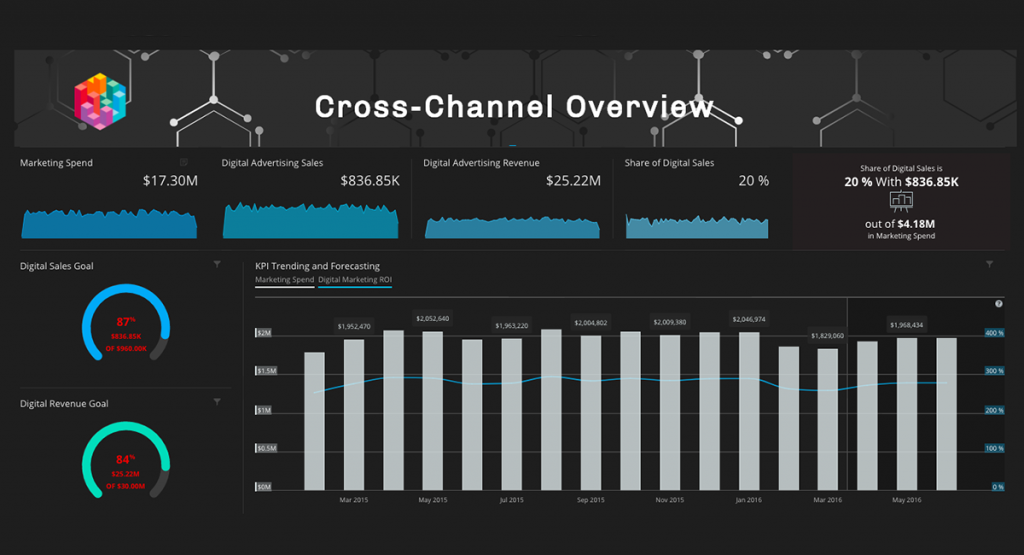
Conclusion:
Most of the consumers of businesses of any size, be it small, medium, or big establishments, today, are in the digital space. If they do marketing research on how the competitor performs, the scope of launching new products or services on the market, etc. with the help of a marketing agency, they can tap a wide range of opportunities. In Programmatic Advertising, the right amount of data + creativity will help the Programmatic algorithm to reach out to the “Right User, Right time, Right Ad.”
Programmatic media buying helps the Advertisers in sales uplift, drive traffic to the site, Brand awareness. There are many Ad Tech platforms that provide services like Data, Ad Verification & Privacy, Creative Ad servers, and Tag management platforms. Based on the business requirement, we can opt for these platforms for better measurements. Most of the DSP incorporated with all of these services, so by choosing the right platforms, an Advertiser can see growth.
Marketing Agencies will be like a one-stop-shop. They understand their requirements and do all the business research and provide a plan on the right amount of spend across all the digital medium as per the market. If you are an Advertiser? and looking for Programmatic Marketing Agency? Reach out Noboru World, one of the fast-growing Marketing + Communication agencies with high expertise in Programmatic Advertising.





We would love to have your opinion.